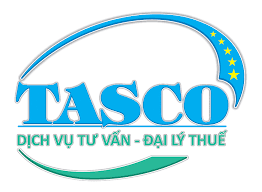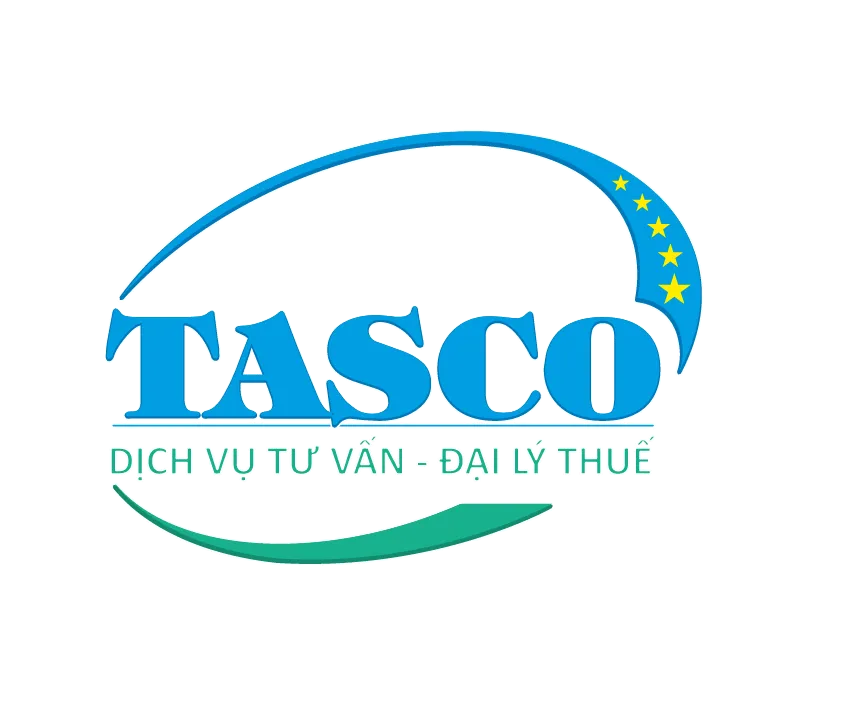INCOME TAX CALCULATED REVENUE AND THE TIME OF CITIZED REVOLUTION TIME 2020
- 04/11/2020 13:06
Turnover for EIT calculation and method of determination:
The turnover for EIT calculation is the total proceeds from the sale of goods, processing and service charges, including price subsidies, surcharges and surcharges that the enterprise is entitled to, regardless of whether or not it has been collected collect money.
Legal basis: Article 5 Circular No. 78/2014 / TT-BTC, Circular 119/2014 / TT-BTC, Circular 96/2015 / TT-BTC.
1. Time of determination of EIT-liable turnover:
Time of recording taxable revenue of corporate income tax in 2020
- For goods sale and purchase: It is the time of transfer of ownership.
- For service provision: It is the time when the service provision is completed or the service provision is partially completed (except for the case specified in Clause 3, Article 5 of Circular No. 78/2014 / TT-BTC, Clause 1 Article 6 of Circular No. 119/2014 / TT-BTC on services used for exchange, internal consumption).
- For air transport: It is the time when the delivery of transport services is completed for the buyer.
- Other cases as prescribed by law.
2. The turnover for EIT calculation is calculated as follows:
2.1 Revenue for EIT calculation according to the direct method:
For enterprises paying value-added tax by the direct method on value added is the revenue inclusive of value added tax.
2.2 Revenue subject to CIT by the deduction method:
For enterprises paying value-added tax according to the tax credit method, it is the turnover excluding value-added tax.
2.3 In case the enterprise provides services for which the customer pays for many years in advance:
Revenue for calculating taxable income is amortized over the number of years of prepayment or determined by revenue of one-off payment.
In case the enterprise is enjoying tax incentives, the determination of the incentive tax amount must be based on the total payable corporate income tax of the number of years of pre-collection divided (:) by the number of years of pre-collection.
How to calculate the turnover for EIT calculation in some special cases:
1) For goods and services sold by installment or deferred payment:
- Is payment of goods or services paid in lump sum, excluding interest on installment or deferred payment.
2) For goods and services used for exchange (excluding goods and services used to continue the production and business process of the enterprise):
- Is determined according to the selling price of the same or equivalent product, goods or service on the market at the time of exchange.
3) For the processing of goods: Is the proceeds from the activities including wages, costs of fuel, power, auxiliary materials and other costs for the processing of goods.
4) For the goods of the units delivering, consigning and receiving agents, consigned under the agency contract, consigned to sell at the right price for the commission is determined as follows:
- The enterprise delivers the goods to agents (including multi-level sales agents), and consignment is the total amount of goods sold.
- The enterprise acts as an agent, consigns goods for sale at the prescribed price of the enterprise delivering the agent or consignment is the commission earned under the agency contract, consignment of goods - Is the proceeds from processing activities including wages, costs of fuel, power, auxiliary materials and other costs for the processing of goods.
5) For property leasing:
- Is the amount the lessee pays each period according to the lease contract.
- Where the lessee pays many years in advance, the revenue for calculating taxable income shall be distributed over the number of years of prepayment or determined by the revenue of lump-sum payment.
Enterprises, based on the conditions for implementing the accounting regimes, actual invoices and documents and the determination of expenses, can choose one of two methods of determining turnover to calculate taxable income as follows:
+ Is the asset rental amount of each year determined by (=) the prepaid amount divided (:) the number of years paid in advance.
+ Is the full rental of the property of the prepaid number of years
6) For golf course business:
* Is proceeds from the sale of membership cards, golf tickets and other revenues in the tax period determined as follows:
- For the form of selling tickets, selling golf cards on a daily basis, the turnover of golf course business as a basis for determining the assessable income of corporate income tax is the proceeds from ticket sales, card sales and other revenues. incurred in the tax period.
- For the form of ticket sales and membership card sales of prepaid cards for many years, the revenue as a basis for determining the corporate income taxable income of each year is the amount of the card sale and other revenues actually collected. divided by number of years of using the card or determined by one-time payment turnover.
7) For credit activities of credit institutions, foreign bank branches:
- Is the income from deposit interests, loan interests, financial leasing revenue receivable arising in the tax period, and recorded into the revenue according to the current regulations on the credit institution's financial mechanism. use, foreign bank branches.
8) For transportation:
- Is the total revenue of transporting passengers, goods and luggage generated in the tax period.
9) For electricity and clean water supply:
- Is the amount of electricity and clean water supply indicated on the added-value invoice.
10) For the insurance business:
- The revenue for calculating taxable income is the total proceeds from the provision of insurance services and other goods and services, including surcharges and additional fees that the insurer is entitled to, excluding tax price. value added, including:
+ Revenue from insurance business:
For insurance and reinsurance business is the amount receivable from the collection of original insurance premium; reinsurance fees; collecting reinsurance transfer commissions; collection of insurance policy management fees; Collecting agency service fees including loss assessment, consideration and settlement of compensation, requesting a third party to reimburse, handling 100% compensated goods (excluding assessment on behalf of member enterprises of internal accounting ministries in the same independent-accounting insurance enterprise) after deducting accounts payable to reduce revenues such as: refund of insurance premium; insurance premium reduction; reinsurance fee refund; reduce reinsurance fees; reimbursement of reinsurance ceding commissions; Reduced reinsurance ceding commissions.
Where insurance enterprises participate in co-insurance, the revenue to calculate the taxable income of each party is the original insurance premium distributed according to the proportion of coinsurance for each party, excluding value added tax. increase.
For insurance contracts with agreement to pay each period, the turnover for calculating taxable income is the receivable amount arising in each period.
In case of performing collection operations between affiliated enterprises or between a dependent accounting enterprise and the head office of the insurance enterprise, the revenue for calculating taxable income does not include the turnover of revenue on behalf of the insurance enterprise. .
+ Revenue from insurance brokerage activities:
Insurance brokerage commissions after deduction of insurance brokerage commissions, reduction and refund of insurance brokerage commissions.
11) For construction and installation activities:
- Is the value of the work, the value of the work item or the value of the volume of construction, installation and acceptance works.
- In case of construction and installation involving raw materials, machinery and equipment, it is the amount of money from construction and installation activities including the value of raw materials, machinery and equipment.
- In case of construction and installation exclusive of raw materials, machinery and equipment, it is the amount earned from construction and installation activities excluding the value of raw materials, machinery and equipment.
12) For business activities in the form of business cooperation contract:
- In case the parties to a business cooperation contract divide the business result by the sale of goods or services, the taxable turnover is the turnover of each party divided under the contract.
- Where the parties to a business cooperation contract divide the business result by products, the taxable turnover is the revenue of the product divided to each party under the contract.
- In case the parties to a business cooperation contract divide the business result by the pre-enterprise income tax profit, the revenue for determining the pre-tax income is the proceeds from the sale of goods or services under the contract. . The parties to a business cooperation contract must appoint a representative to issue invoices, record revenue, expenses, determine pre-enterprise income tax profit divided to each party to the contract. business cooperation contract. Each party to a business cooperation contract shall fulfill its own corporate income tax obligations according to current regulations.
- In case the parties to a business cooperation contract divide the business result by the profit after enterprise income tax, the revenue to determine the taxable income is the proceeds from the sale of goods or services under the contract. . The parties to a business cooperation contract must appoint a representative to be responsible for issuing invoices, recording revenue, expenses and declaring and paying corporate income tax on behalf of the other parties to the contract. business cooperation contract
13) For securities trading:
- Income from services of brokerage, securities dealing, securities underwriting, portfolio management, securities investment and financial consulting, investment fund management, and certificate issuance. funds, market organization services and other securities services in accordance with the law.
14) For the business of prize-winning games (casino, electronic games with prizes, business with betting):
- Is the proceeds from this activity including special consumption tax minus the amount paid for the guest.
15) For derivative financial services:
- Is the proceeds from the provision of derivative financial services in the tax period.
See more related articles: CIT payers and current tax rate according to the latest current regulations.
The above information is the taxable turnover and the time to determine the taxable turnover according to the latest current regulations. If you still have questions about CIT and other taxes (VAT, PIT, ...), please contact TASCO Tax Agent in the ways below for a free consultation.
TASCO TAX AGENCY - THE HIGHEST RESPONSIBILITY FOR ALL SERVICES
Hotline: 0854862446 - 0975480868 (zalo)
Website: dailythuetasco.com or dichvutuvandoanhnghiep.vn
Email: cskh.dailythuetasco@gmail.com






Comment
main.comment_read_more